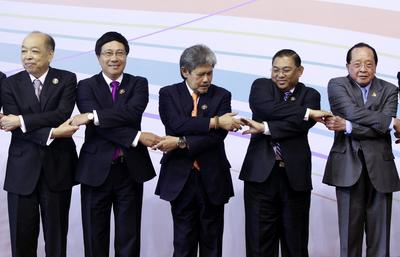Its coming out to the world opens a geo-economic gateway between East and South Asia and the prospect of a new chapter in Asian development.
Myanmar faces many problems in implementing comprehensive economic and political reforms. It has to manage its fractious minority problems. It has to build the human capital that will allow it to complete an enormously difficult and complex economic and political reform process. And — another problem that is frequently assumed away — it has to establish the basis of political trust with its neighbours that will allow the realisation of its geo-economic opportunity.
These are all daunting challenges. But, as observed before, Myanmar’s strategic location and its natural resource wealth give it advantages few countries have. And its place within ASEAN gives it every prospect of coming in from the political and economic cold more quickly than Vietnam was able to after the bitter war with America, not to mention North Korea should it ever make the choice for economic change.
Among Myanmar’s most important relationships is that with Thailand.
As Thitinan Pongsudhirak points out in this week’s lead essay, Thailand used to be the main game in mainland Southeast Asia. Its immediate neighbourhood was problematic, beset by communist expansionism to the east and autarkic isolationism to the west. But Myanmar’s commitment to political and economic reform has decisively changed the equation.
Thailand now relies on Myanmar for much of its gas supply (Thailand’s main source of electricity), an important element of its labour force as well as vital security cooperation in the form of managing the suppression of the drugs trade. Without that cooperation, Thitinan writes, ‘Thailand would face power blackouts, rising wages and a more menacing drugs scourge. For its part, Myanmar has shelved its nuclear weapons program and has gained from workers’ remittances, aid, loans, investment deals and capacity-building programs from Thailand’.
There is now a strong consensus in Thailand on cooperation with Myanmar — a consensus that has yet to be forged in Thai policy towards Cambodia, for example.
Myanmar–Thai cooperation is essential to Myanmar’s achieving its own, and contributing fully to Southeast Asia’s, potential. As Thitinan points out, ‘mainland Southeast Asia connects Northeast, South and Southeast Asia, straddling more than 3 billion people. Alone it constitutes a sub-regional market of more than 350 million consumers when southern China and Vietnam are included. The Thai–Myanmar nexus is its centre of gravity. Ongoing infrastructure development on the mainland is increasingly connecting land routes in myriad directions, east–west and north–south. Borders erected during colonial times matter decreasingly as the flows and movements of goods, peoples, trade, investment, and overall development criss-cross the region’.
‘While Thailand is Myanmar’s corridor to ASEAN, Myanmar’s political awakening has turned mainland Southeast Asia into a beckoning and burgeoning region that will only expand in GDP terms, underpinned by abundant natural resources and growing transport and communications connectivity. The challenge in Thai–Myanmar relations and in mainland development will be politics, big and small’, says Thitinan.
Certainly these opportunities have captured the imagination of foreign and economic policy strategists in the region. Last week in Medan, Mahendra Siregar, Indonesia’s Vice Minister of Finance, set out a plan that puts Myanmar in a prime position at the fulcrum of developing the transport infrastructure that would build a land bridge between China, India and Southeast Asia. The ADBI is undertaking a major study on the relationships between South, Southeast and East Asia.
APEC is also developing an ambitious plan that will deepen and broaden the region’s connectivity around and across Asia and the Pacific and within APEC’s archipelagic and continental regions. It focuses on three pillars: physical connectivity, institutional connectivity, and people-to-people connectivity. Physical connectivity has importantly to do with infrastructure investment, particularly transport infrastructure. This is now a priority in the G20 dialogue too.
As Thitinan concludes, while Myanmar is currently the centre of international attention, the Thai–Myanmar relationship and the strategic corridor it forms will help ‘mould the shape of things to come on the Southeast Asian mainland’, with broader geo-political implications for the whole of Asia.
Peter Drysdale is Editor of the East Asia Forum.

